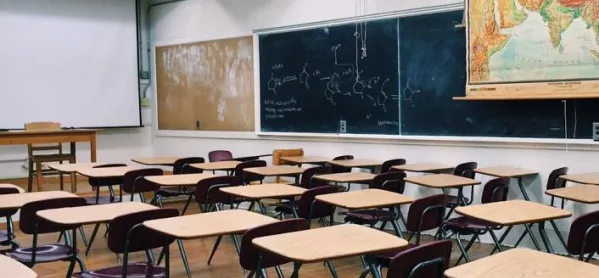The rate of fixed-period exclusions has increased, mainly driven by the number of exclusions in the North East.
There has also been a 13 per cent rise in the number of permanent exclusions for physical assault against an adult in the space of a year, according to new government statistics.
However, the rate of permanent exclusions in schools in England has stabilised after rising for four years.
Quick read: Call to tighten fixed-term exclusions limit
Timpson Review: Key recommendations of landmark review of school exclusions
Advice: 5 steps to reducing exclusions
Today’s annual statistics for 2017-18 come amid concerns about school exclusions, off-rolling, and perceived links to knife crime and gang activity.
In May, the government said it had accepted in principle the recommendations of the Timpson review into the use of exclusions in schools.
The number of fixed-period exclusions across all state-funded schools increased by 8 per cent between 2016-17 to 2017-18, to stand at 410,800.
The document says this rise has been driven by secondary schools, which saw the fixed-period exclusion rate rise from 9.4 per cent to 10.13 per cent over the period. The rate in primary schools rose by 0.03 percentage points, to 1.4 per cent.
The report notes that primary, secondary and special academies all had higher rates than local authority maintained schools.
The rise in fixed-period exclusions is blamed on increases in the North East, where the rate jumped from 5.92 per cent to 9.34 per cent. The report singles out increases in Hartlepool, Stockton-on-Tees and Redcar and Cleveland local authorities.
Today’s report says: “The increase in permanent exclusions seen in recent years has slowed, with the number across all state-funded primary, secondary and special schools increasing slightly from 7,700 in 2016-17 to 7,900 in 2017-18.
“The resulting rate of permanent exclusions has remained stable at 0.10 per cent, which is equivalent to around 10 pupils per 10,000. This has also remained stable across all school types.”
It notes that primary academies have a higher permanent exclusion rate than local authority maintained schools, although the situation is reversed in secondary schools.
There have been big increases in the number of permanent exclusions for physical assault against an adult (up 13 per cent to 845) and drug and alcohol issues (up 13 per cent to 643). However, those for racist abuse, sexual misconduct and damage both fell.
Today’s document says that persistent disruptive behaviour “remains the most common reason for exclusions but permanent exclusions for this reason have fallen for the first time in five years”.
This accounted for 34 per cent of all permanent exclusions and 30 per cent of fixed period exclusions in 2017-18.
Apart from “other”, the next biggest reason for permanent exclusion was physical assault against a pupil (13.1 per cent) followed by physical assault against an adult (10.7 per cent).
A Department for Education spokesperson said: “There is no right number of exclusions, and although exclusion rates remain lower than 10 years ago, we have been clear that exclusion from school should not mean exclusion from education.
“Headteachers do not take the decision to exclude lightly and we will continue to back them in using permanent exclusion as a last resort.
“Following the Timpson Review, we are consulting on how to make schools more accountable for the students they exclude, working with Ofsted to clamp down on off-rolling, and calling on local areas to explain or change trends in exclusions for certain groups of children.”




